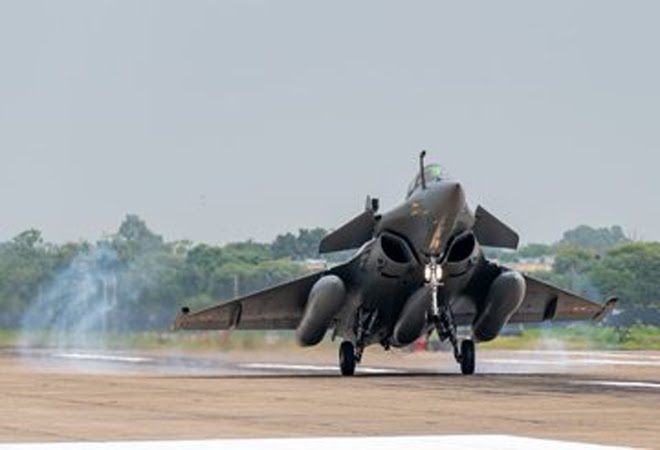Rafale Fighter Wins new deals worth billions

The United Arab Emirates has become the sixth international customer for Dassault Aviation’s Rafale fighter jet
Until 2015, Dassault Aviation was fighting an uphill battle – and it was not for lack of trying. Since 2008 or even before, negotiations had been started with Brazil, India, UAE and few others. However the Rafale was deemed too expensive: Its selling price was about €100 million, a higher maintenance costs, according to a report published by the University of Toulon in 2011. Its competitors, such as the multinational Eurofighter, the Swedish Gripen fighters and American jets, often sell for less than €100 million.
Then India came to its rescue. During the most stringent of technical trials done by the Indian Air Force, Rafale beat other fighters hollow. The American F16 was rejected outright because it was no match. The Rafale though only a 4th generation+ fighter when modified as per IAF requirements became 4thgeneration ++++ aircraft capable of taking on even the F35 if required.
So now the sale of 80 Rafale fighter jets to the United Arab Emirates has confirmed the continuing commercial success of the French fighter, a twin-jet aircraft able to operate from either land or an aircraft carrier.
A December 3 agreement for France to sell 80 Rafale fighter jets to the United Arab Emirates (UAE) was hailed as “historic” by French Minister of Defence Florence Parly. The CEO of Rafale manufacturer Dassault Aviation, Éric Trappier, has described it as the “most important contract ever obtained by the French military aeronautics industry”. The Crown Prince of Abu Dhabi, Mohammed ben Zayed al-Nahyane, signed the €16 billion agreement (including €2 billion for weapons), a record for the French aircraft manufacturer.
For Dassault – and also for Thales (the company that supplies all the Rafale’s internal electrical systems), Safran (which provides the engines) and several hundred other subcontractors – the deal means guaranteed business for more than six years. It takes at least one month to manufacture a Rafale.
The sale – which is also good economic news for French President Emmanuel Macron, just over four months before the next presidential election. During its more than 25 years of existence, the jet has faced challenges and emerged in different variations. Presented as one of the most advanced fighters at its inception, the Rafale earlier struggled to sell abroad.
In fact, the French aircraft was locked in a vicious circle: Dassault Aviation needed more orders before economies of scale would allow it to sell at a lower price, but countries were reluctant to commit to purchasing because of the price. And the jet’s sales to the French military alone would never be large enough.
Eventually the Rafale demonstrated its usefulness in Libya and Afghanistan as the first decade of the 2000s came to a close, arousing more international interest. Its performance in battle conditions was the tipping point, according to La Tribune business daily.
In 2015 Egypt became the first Rafale buyer outside of the French military, purchasing some 20 jets. However it has established itself only after the Indian contract. The IAF pilots flying the Rafale can beat any other flying the F35 or J20. Other contracts soon followed – with, Qatar, Greece and Croatia – until the UAE this week became the sixth member of the club of Rafale’s foreign customers.
This latest contract means more Rafale jets are now sold abroad than in France (236 international sales versus 192 domestic).
Though this renaissance of the Rafale – once described as a “cursed aircraft” and now considered a success story – is not being liked by other manufactures, especially the Lockheed of USA, as these have encroached upon its market.
Lockheed Martin has already sold nearly 1,000 F-35s worldwide, not counting orders from the US Army itself. And more orders mean the US manufacturer can do what Dassault Aviation cannot: lower its price. The F-35A model costs less than $80 million (€70 million).
Both aircraft occupy the same market niche – multi-purpose or “omni-purpose” fighter jets, to use official Dassault Aviation jargon. During a single mission they are capable of establishing air superiority – the traditional mission of fighter jets – as well as carrying out bombing and ground-support operations.
The only edge which F35 has is its stealth characteristics, which is most likely a very over hyped characteristic. True evaluation will be possible if ever there is a aerial battle between US Navy F15s / F35 B and J20 of PLAAF or between IAF Rafale and J20 of PLAAF.




